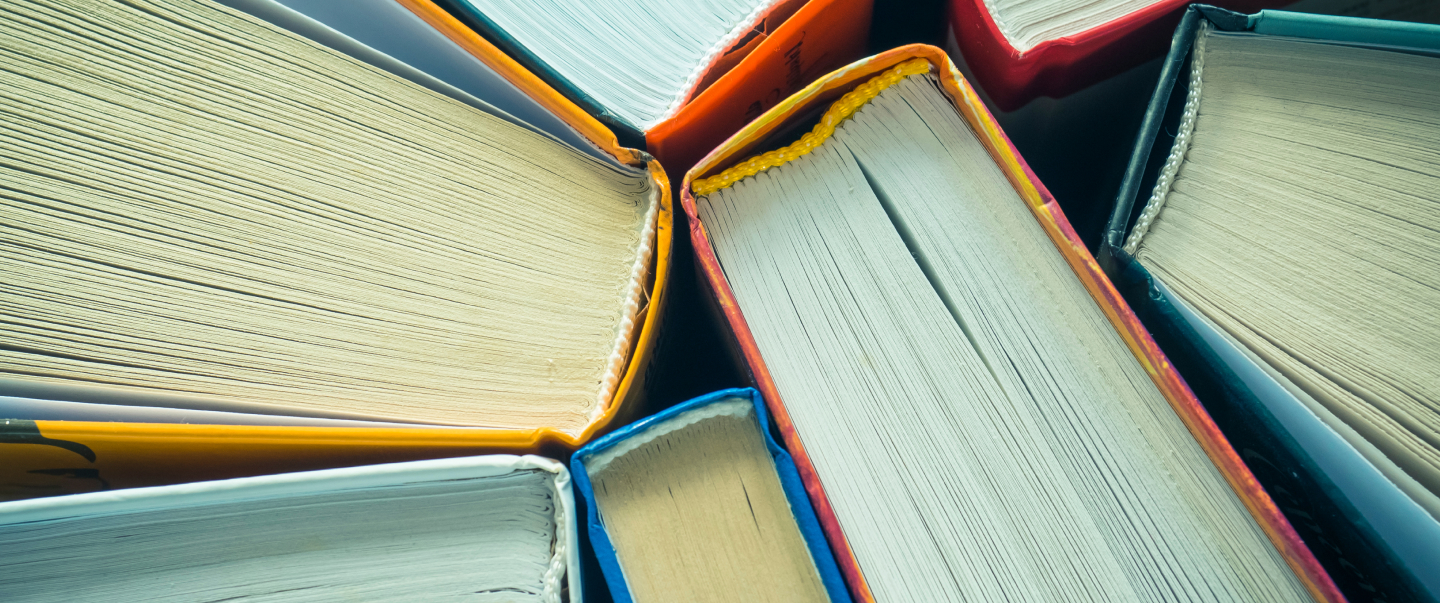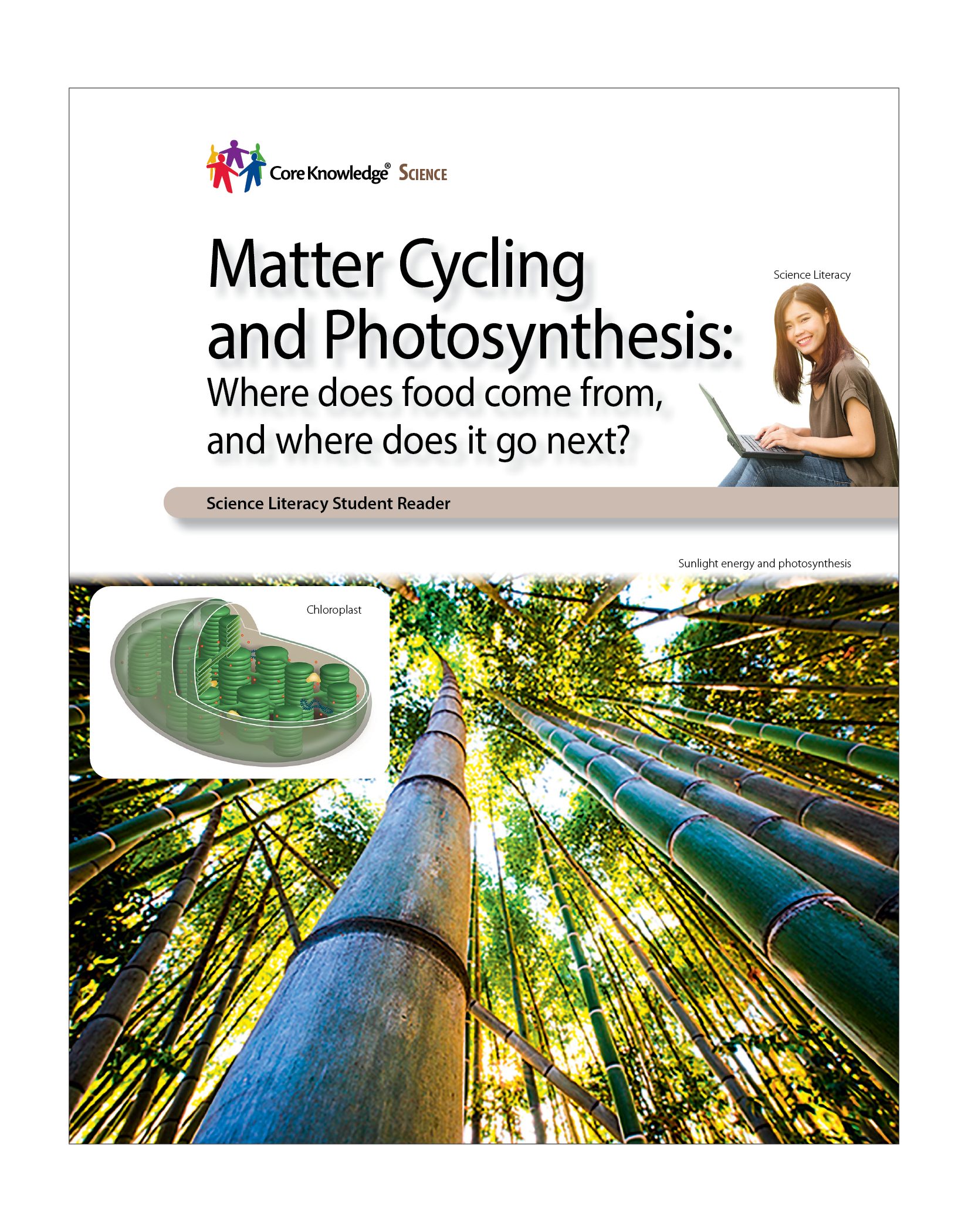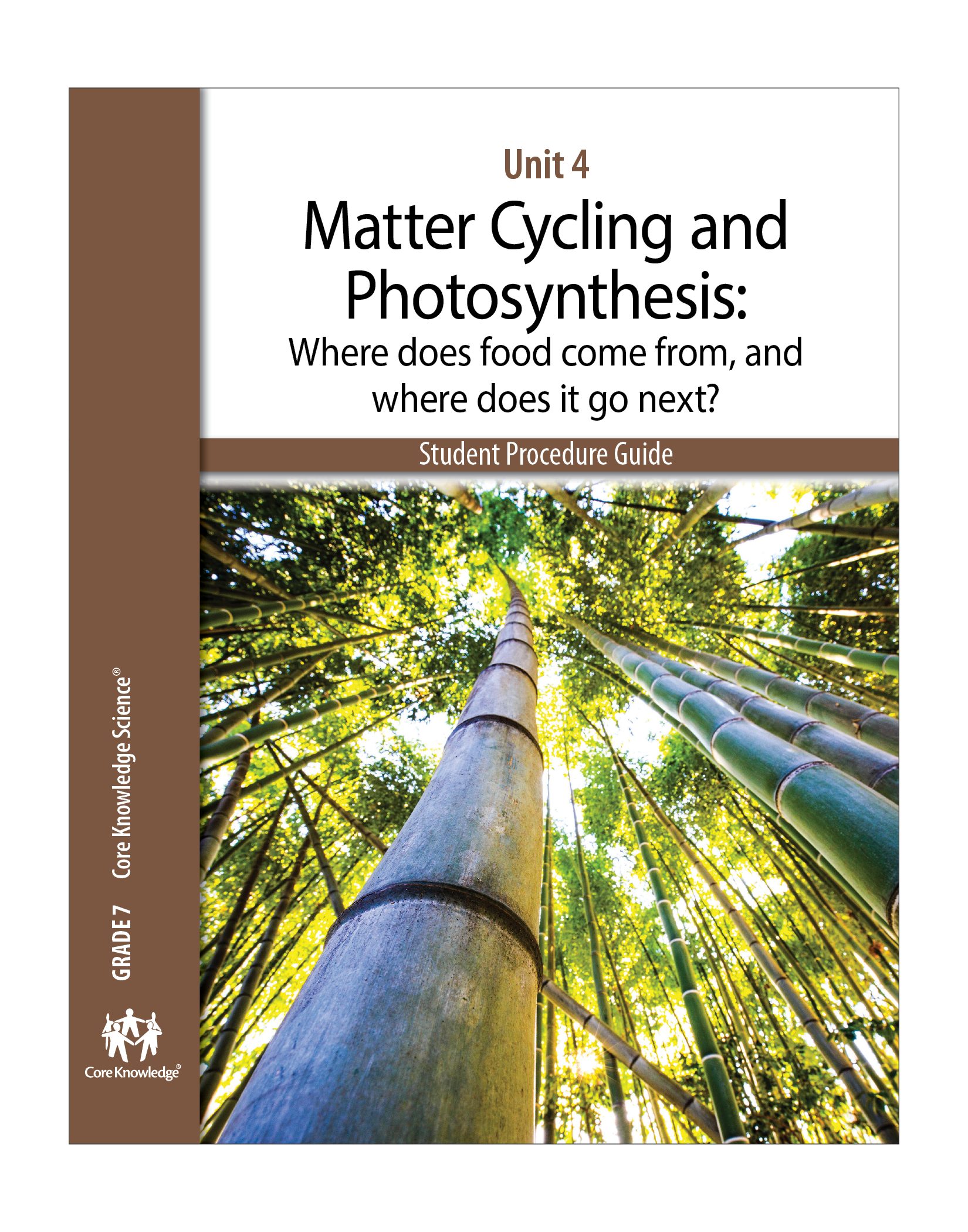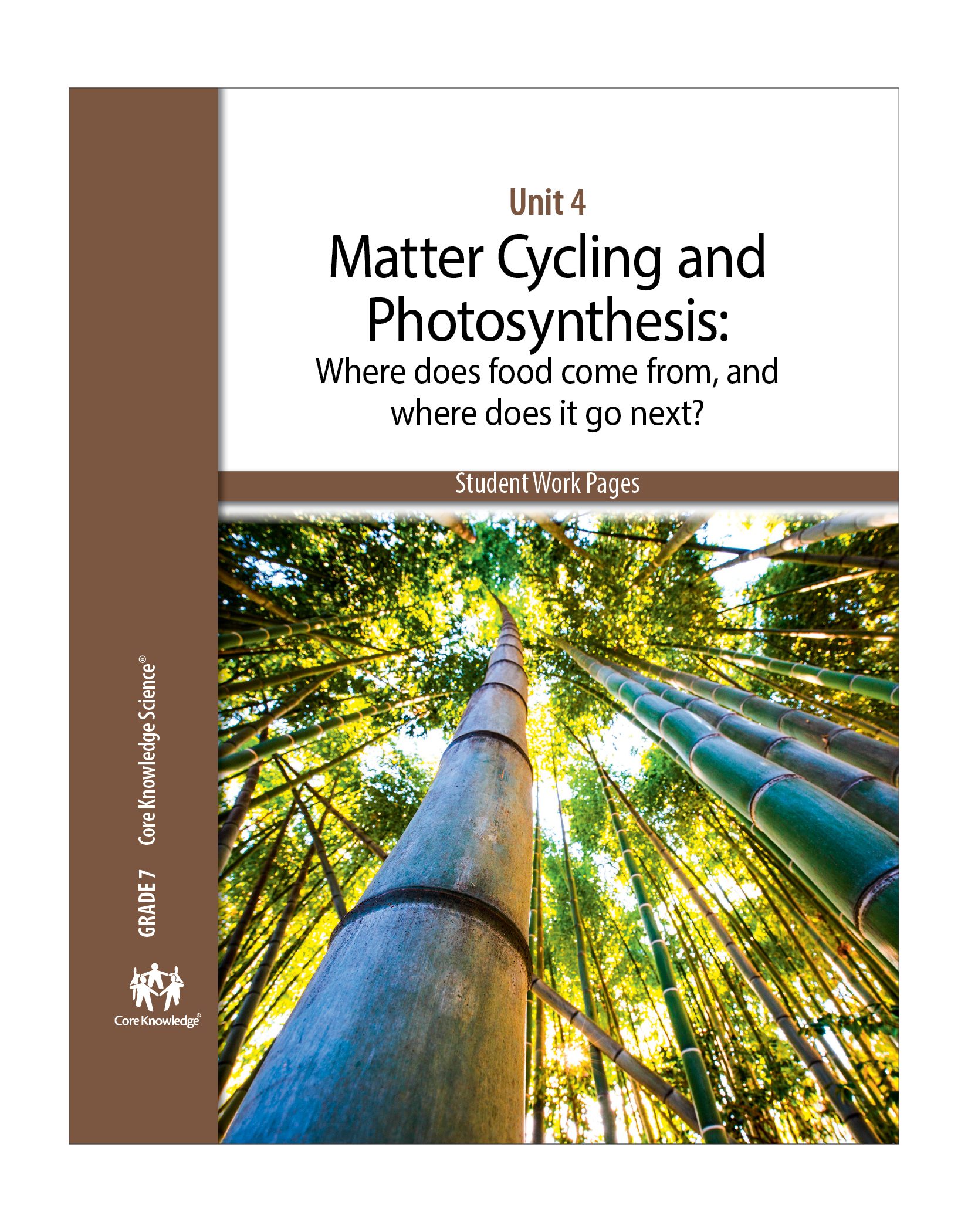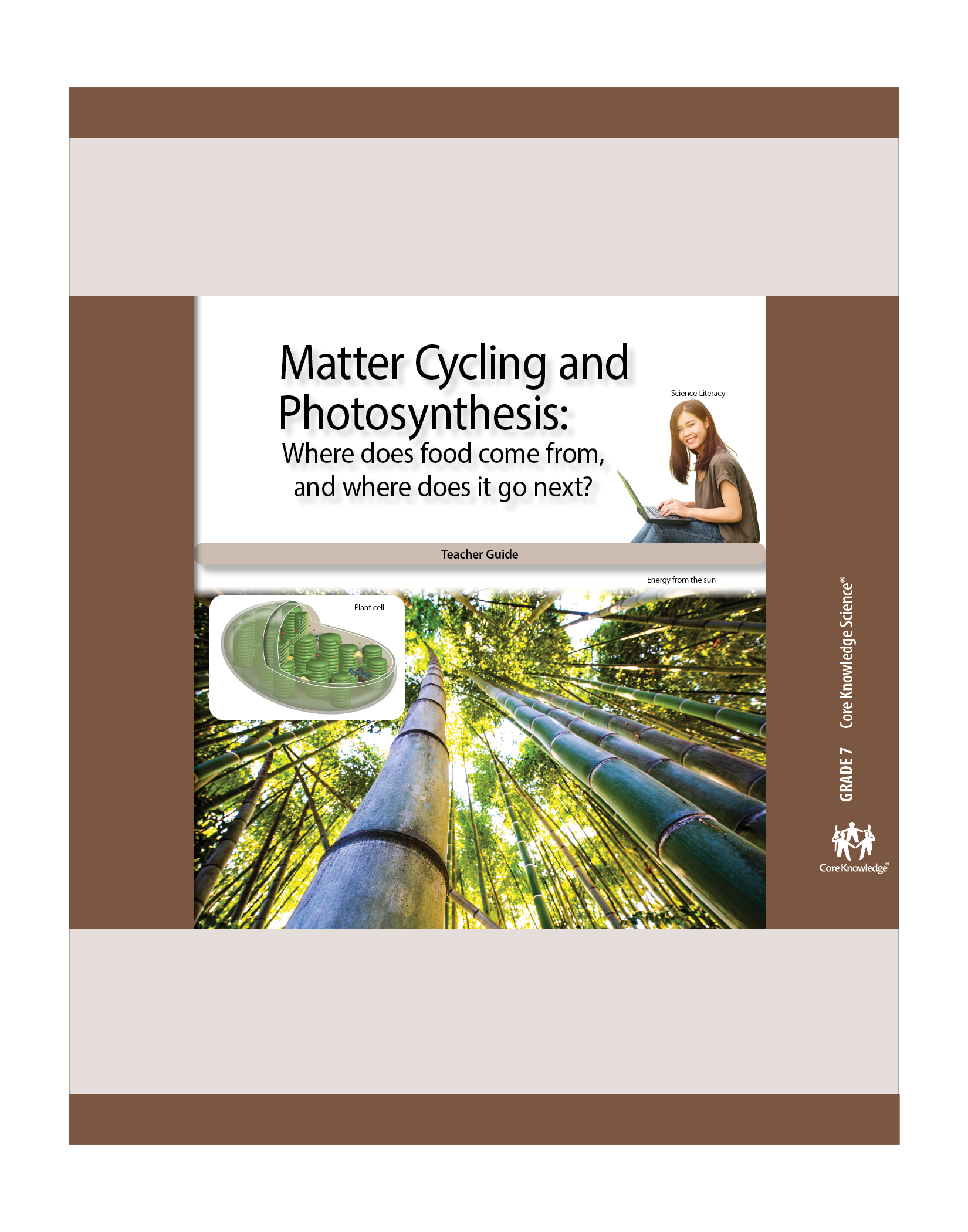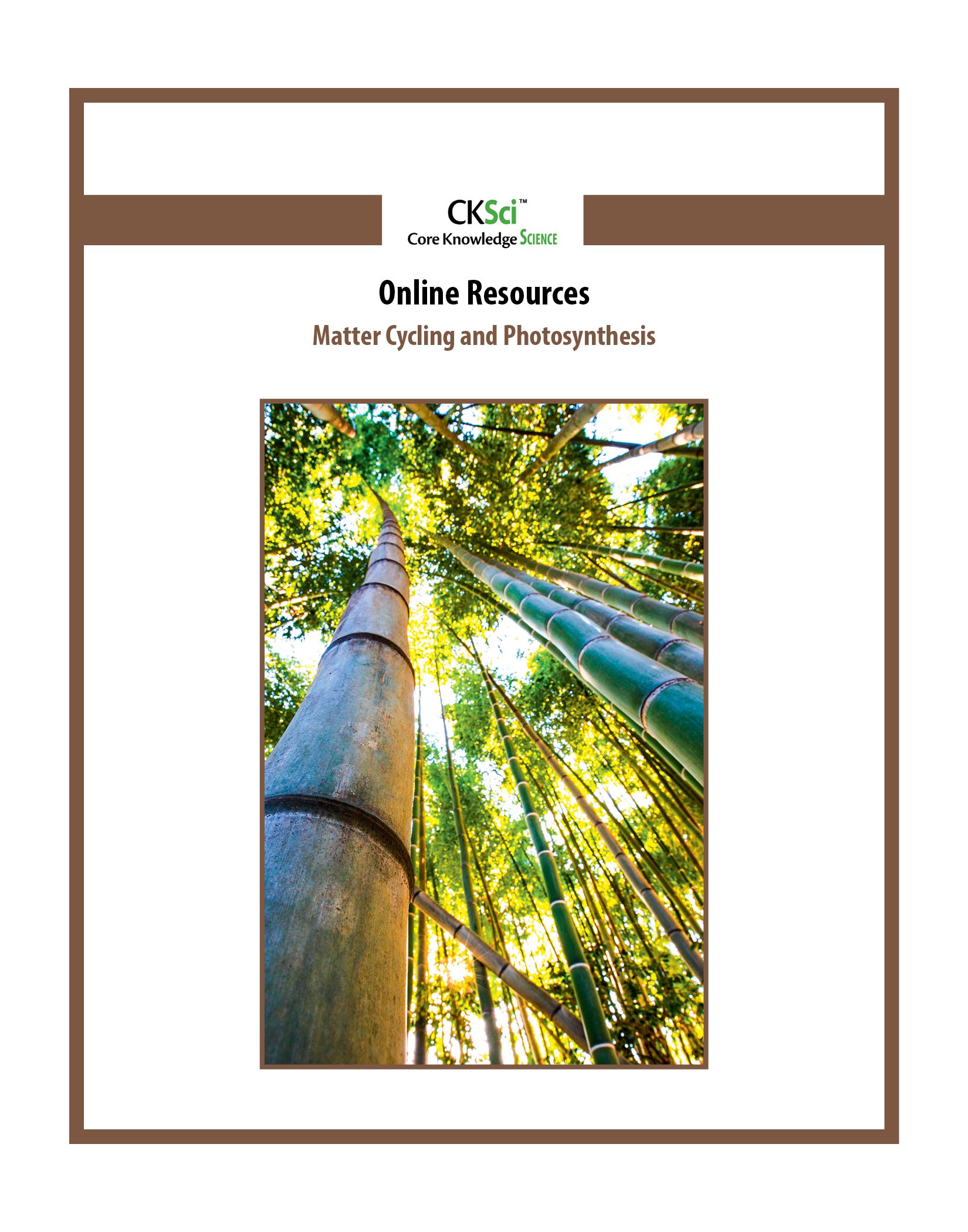
CKSci Unit 4: Matter Cycling and Photosynthesis
Focus:
In this unit, students start with questioning the source of the food they eat. Then they particularly begin to explore how plants manufacture this food and what happens to the food once it has been used by the body. The subtitle of this unit is Where does food come from, and where does it go next? Food from plant or animal sources are phenomena that all students have some experience with. Students eat pancakes with maple syrup, but exactly what is maple syrup, and how did a maple tree manufacture it? Most students know about photosynthesis, but what exactly is it, and what is the relationship between sunlight and the maple syrup a tree makes? This unit allows students to observe the phenomena of food and begin to unravel the important processes of photosynthesis and food use by the body. Students spend time working with classmates to analyze their shared experience, formulate new questions, and develop new strategies for answering them. Students explore concepts that include the following:
- Do plants get their food molecules by taking them in?
- Are any parts that make up food molecules coming into the plant from above the surface?
- Why do plants need light?
- Why don’t plants die at night?
- Where does the rest of our food come from?
- What happens to food that doesn’t get eaten?
As students move through their day-to-day activities, they will also read Core Knowledge literacy selections. These include factual articles, history of the sciences, art and literature, spotting bad science in the media and advertisements, graphics comprehension, research-type articles, reliability of sources, and other areas of science literacy.
Number of Lessons:
- Teacher Guide: 15 Lessons
- Student Reader: 5 Collections
Instruction Time (Student Reader):
- Lessons are designed to be completed in one or more class periods.
- A Pacing Guide found in Online Resources offers a suggested time to complete the entire unit if class is held each day.
- The entire unit should take about 29 days to complete if class is held each day.
- A complete list of Materials needed to complete the unit is provided in Online Resources.
Additional Search Terms:
science literacy • phenomenon • nutrient • social media • glucose • sucrose • photosynthesis • carbohydrate • protein • vascular tissue (plant) • grain • starch • chlorophyll • biomass • cellular respiration • phytoplankton • nonfiction • informational text
